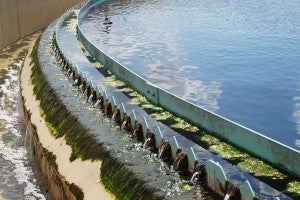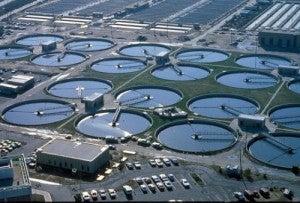Why wastewater treatment plants are investing in farmers

The Des Moines Water Works lawsuit represents one of the most contentious challenges in modern-day agriculture: who should pay for protecting water quality from excessive nutrient loads?
Excess nutrients in streams and watersheds can cause algae blooms as well as air and water pollution. Whether due to excess fertilizer runoff from agriculture, urban sewage, stormwater runoff, or air depositions of nitrogen, wastewater treatment facilities often bear the primary responsibility of nutrient removal in many watersheds. Under the Clean Water Act, these facilities are charged with cleaning water to a certain standard, which can be increasingly hard to meet – and to pay for – when excess nutrients are present.
But there are some interesting solutions in the works.
I asked Pat Sinicropi, Senior Director of Legislative Affairs at the National Association of Clean Water Agencies (NACWA), to tell me about the collaborative approach her organization is taking to solve the problem – by working with farmers.
Can you tell me more about NACWA?
The National Association of Clean Water Agencies (NACWA) supports the interests of wastewater treatment plants and agencies across the country. Our members, who are regulated under the Clean Water Act, are responsible for making sure that your water is clean and safe to drink.
Why did NACWA take up an interest in agriculture?
We all contribute to the nutrient problem when the organic material we eat is digested then discharged, in the form of wastewater, back into our surface waters. But in the majority of watersheds impaired by nutrient pollution, including the Gulf of Mexico, the Great Lakes Basin and the Chesapeake Bay, the dominant source of nutrient impairment is agricultural runoff.
The normal sewage treatment process is not designed to remove nutrients from wastewater, so to combat water pollution, additional treatment is necessary – but it comes at a considerable expense. Wastewater treatment agencies are regulated, so a number of our members are being required to install costly treatment at the plant. Meanwhile, most agricultural operations are not regulated under the Clean Water Act.
But the good news is that more low-cost solutions are available if we focused on reducing nutrient runoff from agricultural operations. So NACWA members began to ask whether there could be an opportunity to work with our agricultural neighbors to find more affordable solutions to address the nutrient challenge for our ratepayers.

How do you work with farmers?
For a number of years we advocated for tighter controls on agriculture and for strengthening the Farm Bill to improve nutrient management in agriculture. But this wasn’t enough to reduce our treatment costs and protect water quality.
We have a lot of capacity at our utilities, so we figured, why not use this extra capacity to work directly with farmers and help them manage nutrients more efficiently? We can for example use our resources to help growers install wetlands and buffers on their farms. This is a more cost-effective solution for everyone involved, and treatment facilities can actually get regulatory credit for these upstream nutrient reductions.
We then started to work with the McKnight Foundation, AGree and the U.S. Water Alliance, convening dialogues on water and agriculture. Wastewater treatment experts and farmers gathered to talk about how each sector views the fertilizer runoff issue, and to develop practical solutions.
What joint projects are in the works?
There are countless collaborations taking place all across the country between municipalities and farmers. In Iowa, the same week that the Des Moines Water Works Association announced their lawsuit, the wastewater plant in Cedar Rapids received an award from the U.S. Department of Agriculture to work upstream with farmers on a regional conservation partnership project focused on better nutrient management practices. The Iowa Soybean Association is also working with Cedar Rapids on this project to reduce nutrient runoff.
How far will these efforts go in solving the runoff problem?
Collaboration can make a big impact on improving water quality, and local wastewater agencies can be a big help to communities. These efforts also present an alternative to regulatory strategies.
But to be successful at scale, we’ll need a combination of state, federal and local action.
Related Links
Collaborative conservation: A ripe example from America’s farms
An agricultural marriage made in heaven: state programs & private sector initiatives
Beyond regulation: making the business case for sustainable farming












